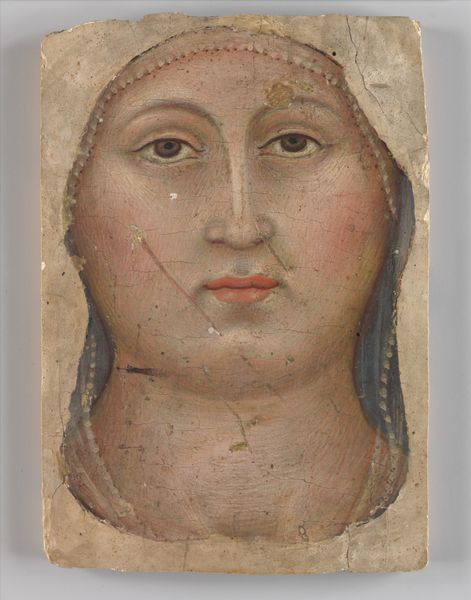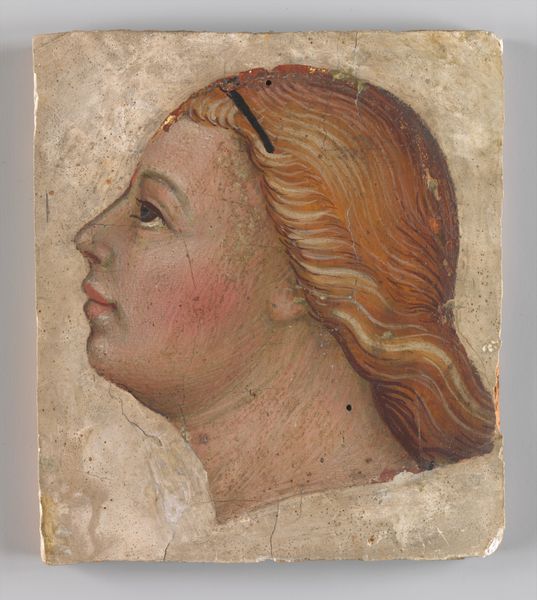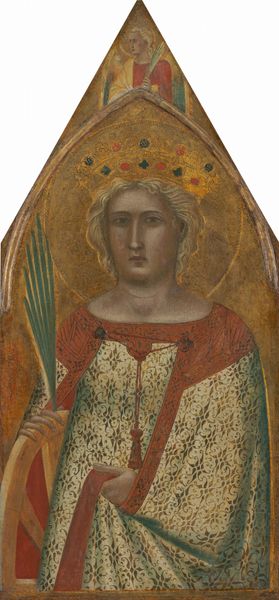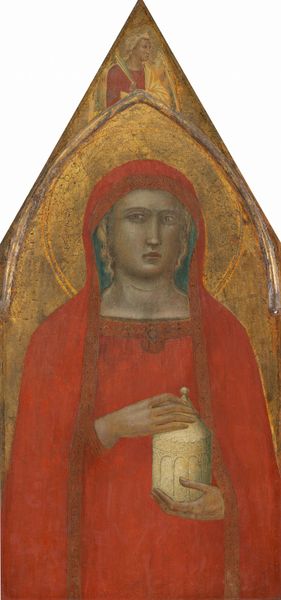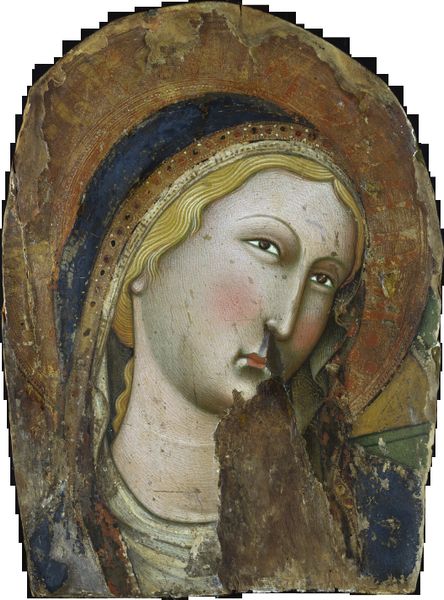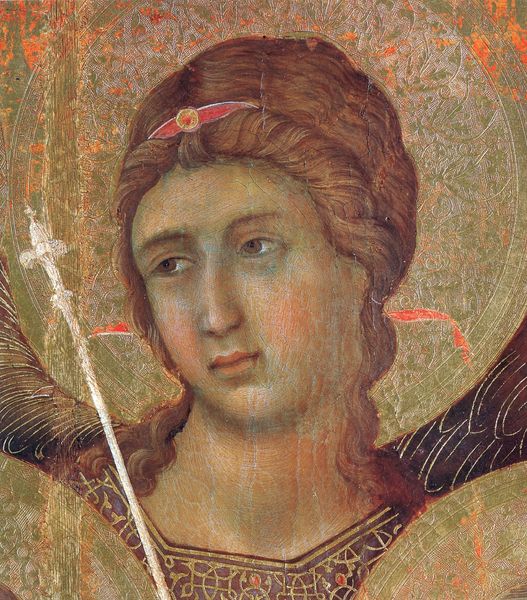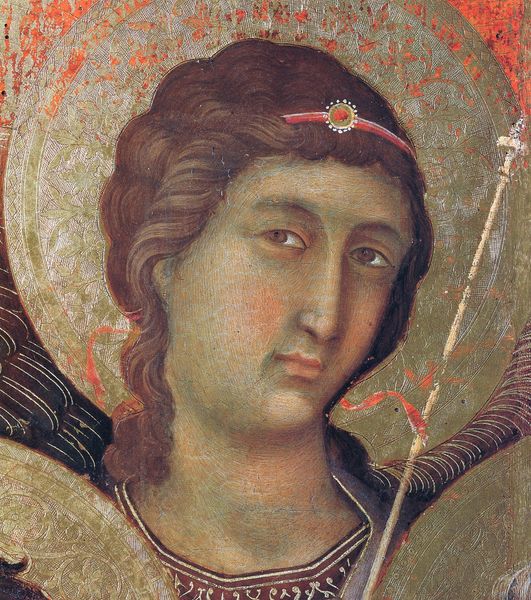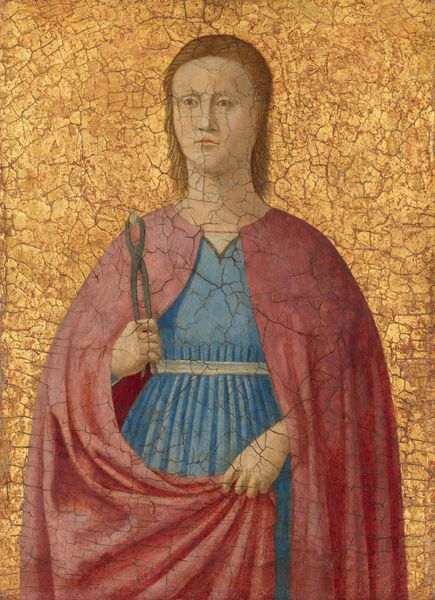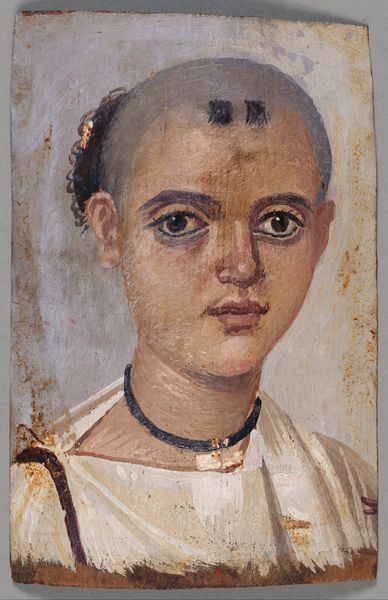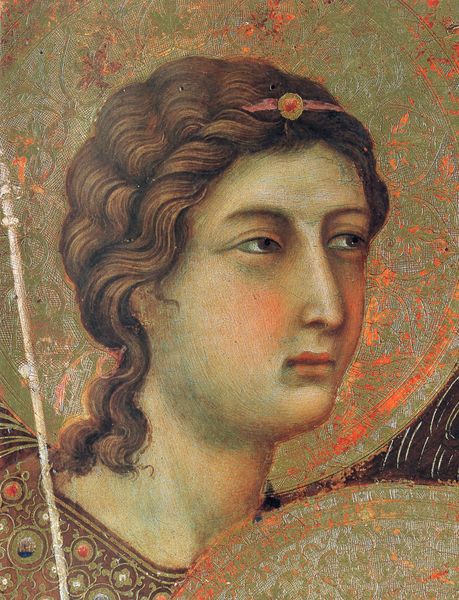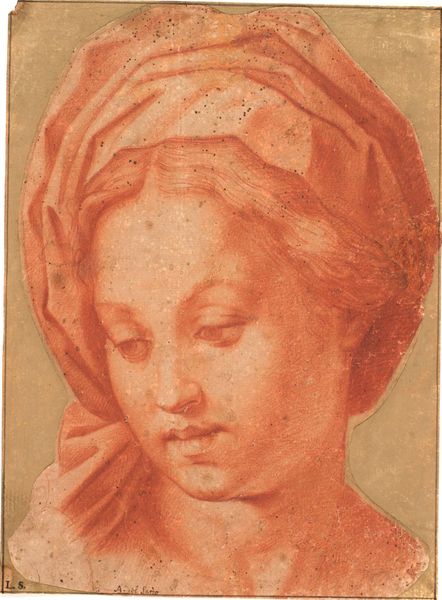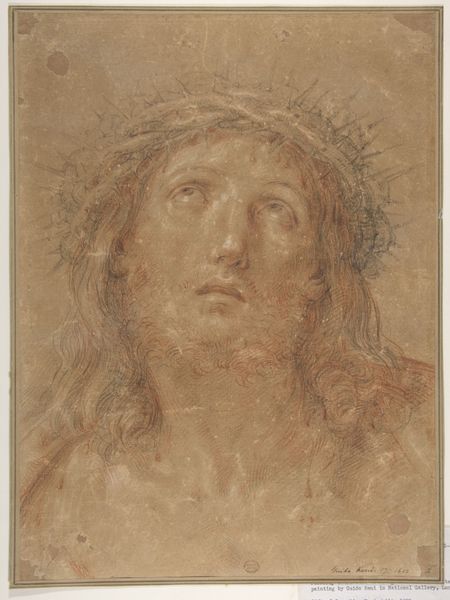
tempera, painting
#
portrait
#
tempera
#
painting
#
sienese-school
#
oil painting
#
history-painting
#
italian-renaissance
#
angel
Dimensions: Overall: 6 1/4 × 4 3/4 in. (15.9 × 12.1 cm)
Copyright: Public Domain
Curator: Taddeo di Bartolo's "Head of an Angel in Full Face," dating from 1394 to 1400, offers us an intriguing glimpse into late 14th-century Sienese painting. Crafted in tempera, it's currently held in the collection of the Metropolitan Museum of Art. What strikes you about it initially? Editor: She seems wistful, almost melancholy. And there's a rawness to the texture; you can really sense the artist's hand in applying the pigment. The composition is very centered; it draws your gaze directly into those thoughtful eyes. Curator: Indeed, the symmetry enhances that frontal directness so typical of Italian Renaissance portraiture. There’s also a striking tension in the application of color. The almost earthy tones of the skin contrast subtly with the reddish hue of her hair and that touch of verdant green in the headband. These color relationships draw you in as well. Editor: That headband feels slightly unconventional, doesn’t it? More of a simple ribbon, giving her a grounded look. The artist did a good job here: Her look isn’t like she just flew down from heaven or something—it feels like you might meet her on a country road somewhere. Curator: Well, it subverts expectations of the angelic. Bartolo refrains from elaborate halos or wings. Instead, this painting zeroes in on conveying the angel’s spiritual character through a focus on facial structure and tone. There's a vulnerability present, an intimacy fostered by its scale. Editor: The tempera feels like it has cracked with time, and this makes her human in a way; maybe this isn’t just any angel, but the artist reflecting upon loss, maybe even the fragility of divinity itself. Curator: A pertinent reflection. Considering the artwork’s history, time itself acts as a co-author. Thank you. Editor: Indeed, art can really make you feel more human yourself, or rather, divine! Thank you as well.
Comments
No comments
Be the first to comment and join the conversation on the ultimate creative platform.
